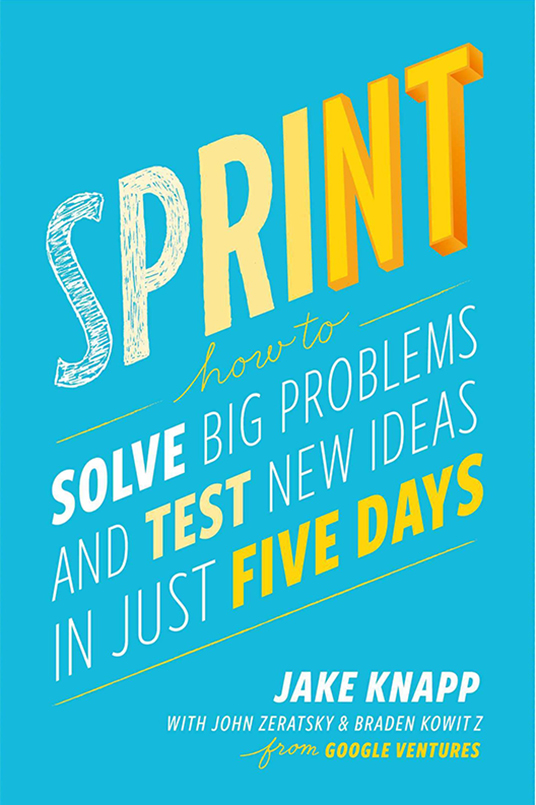Sprint will be a great resource for anyone who is working on running better workshops, brainstorming meetings, regular meetings, etc.
The methodology is specifically for SPRINTS but many of the components can be applied to running other types of meetings/processes that require team collaboration and sharing ideas.
Flow: 5/5, it can be read in less than a week.
Actionability: 5/5, the book is packed with checklists and specific step-by-step instructions on how to put the knowledge into action.
Mindset: 4/5, it will change the way you think about how long it takes to “test” and idea or see the results of a project.
Some Of My Highlights:
-
“The common traits they all shared? They had deep expertise and they were excited about the challenge.”
-
“She needs to be confident leading a meeting, including summarizing discussions and telling people it’s time to stop talking and move on.”
-
“Once you’ve settled on a long-term goal, write it at the top of the whiteboard. It’ll stay there throughout the sprint as a beacon to keep everyone moving in the same direction.”
-
“What caused it to fail? How did your goal go wrong?”
-
“In our sprints with startups, we have an unfair advantage: We’re outsiders who don’t know anything, so our dumb questions are genuine. In your sprint, you’ll have to act like an outsider.”
-
“And be careful on a heavy lunch.”
-
“Slow decisions sap energy and threaten the timeline of the sprint.”
-
“Your team will take turns giving three-minute tours of their favorite solutions: from other products, from different domains, and from within your own company.”
-
“Ask everyone on your team to come up with a list of products or services to review or inspiring solutions.”
-
“We know that individuals working alone generate better solutions than groups brainstorming out loud.”
-
“What would be another good way to do this?”
-
“You’ll need to ask the right questions to find the right people.”
-
“In each of the examples, we had a ‘right’ answer in mind, but there was no way that the person filling out the survey could predict what it was.”
-
“This distinction between feedback and reaction is crucial. You want to create a prototype that evokes honest reactions from your customers.”
-
“It’s best if the Interviewer doesn’t work on the prototype. This way, he won’t be emotionally invested in Friday’s test, and won’t betray any hurt feelings or glee to the customer.”
